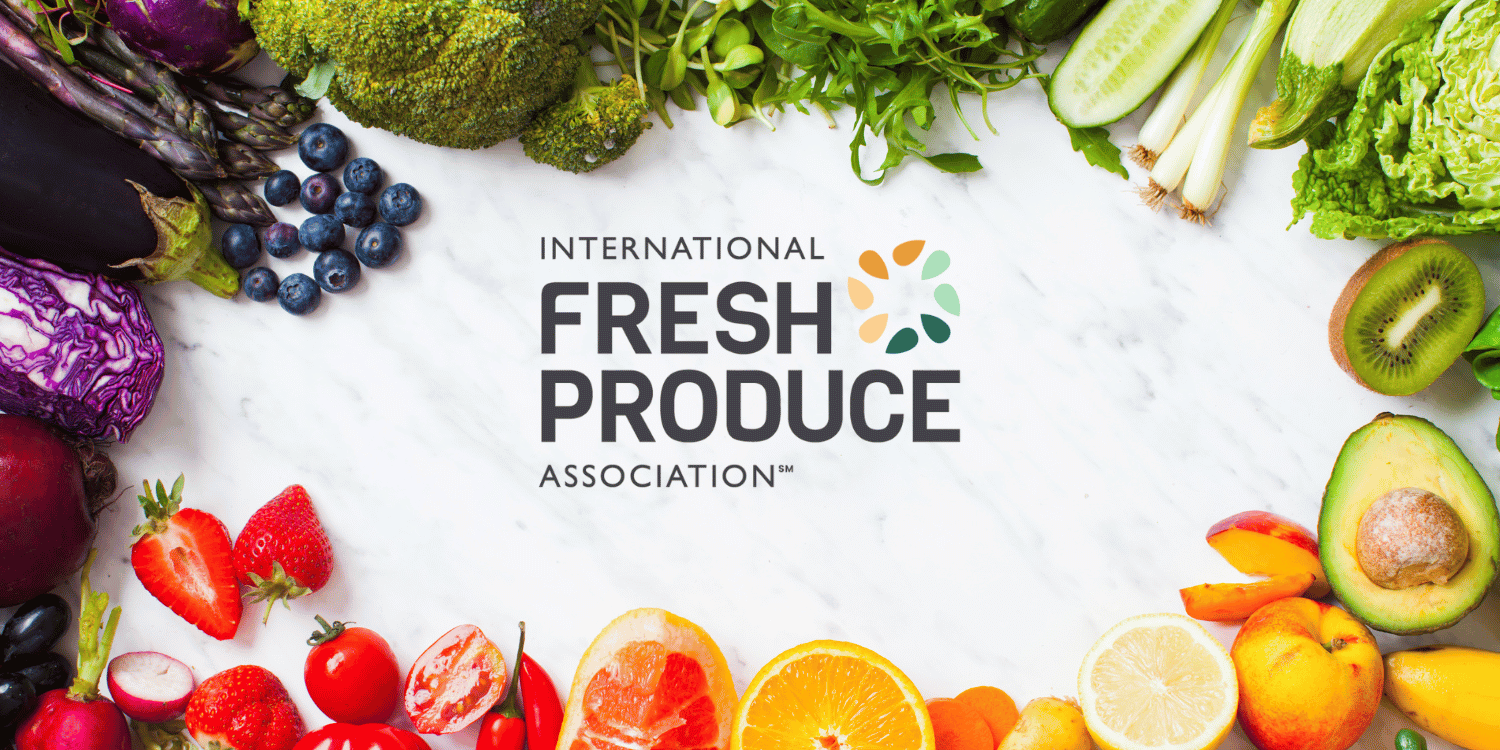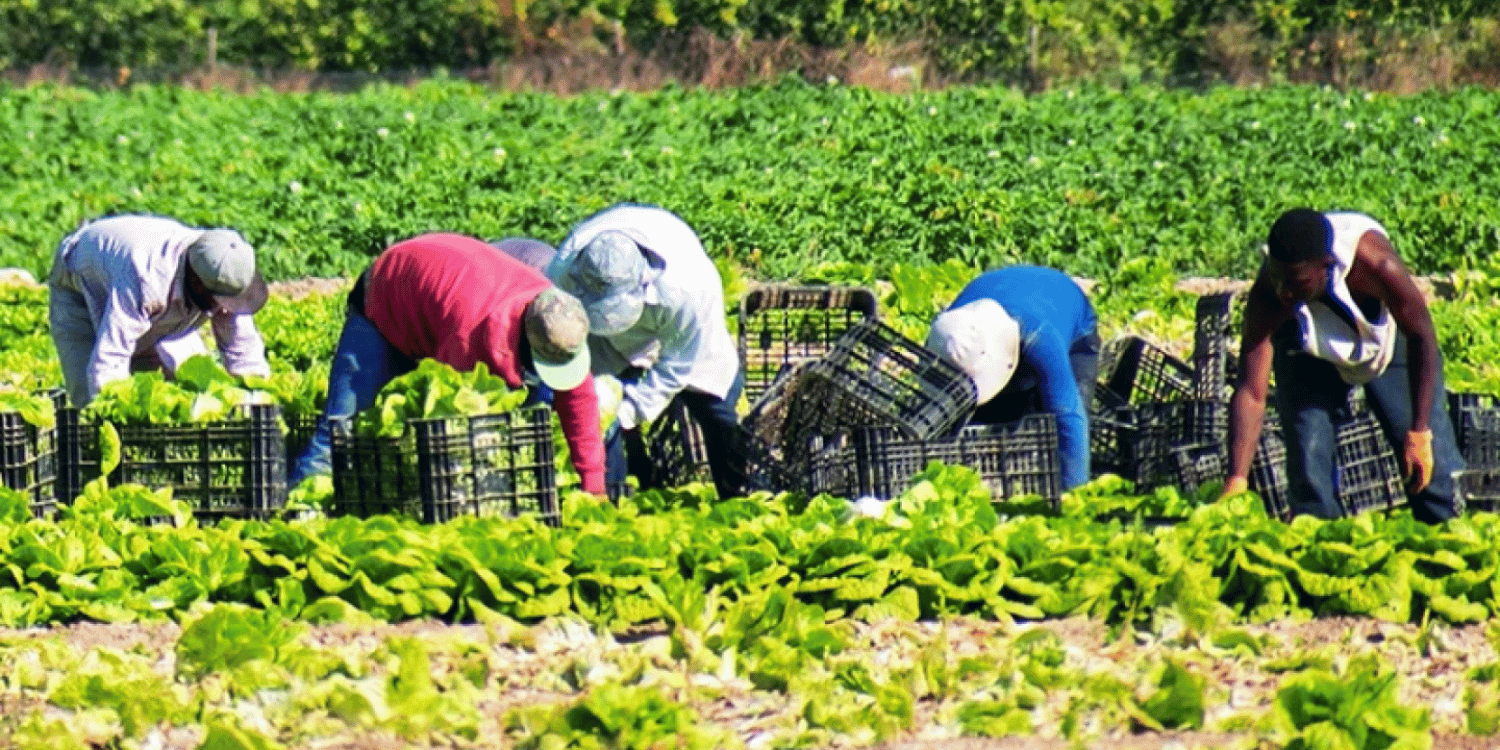With the rapid pace of globalization, legislations across the world are continuously evolving.
Decisions made in one country’s legislature can significantly impact international trade, particularly in the agricultural sector.
This global interconnectedness means that the landscape of produce trade is frequently shifting.
It is critical for stakeholders involved in the international trade of agricultural goods to stay updated.
In this regard, we aim to provide an in-depth analysis of recent legal changes worldwide.
Understanding these changes will aid individuals and businesses in navigating the dynamic market of global produce trade.
- UK’s Brexit had a considerable impact on EU agricultural import and export.
- The replacement of NAFTA by the USMCA affected North American trade significantly.
- EU’s Green Deal brought upon substantial changes in agricultural practices.
- China’s ongoing tariff wars have greatly impacted global produce exchange.
- The UN’s Sustainable Development Goals have considerable implications for the agricultural sectors.
Having assessed the key takeaways in relation to global legislation changes impacting produce trade, there are still significant discussions to be had.
Included in the forthcoming sections, we’ll explore the specific effects these changes have had on smaller, niche segments of the agricultural market, and examine what future implications these changes could bring.
We will also investigate the role innovation and technology are playing in navigating these changing legislative landscapes.
Armed with this knowledge, you’ll be better positioned to understand, react to, and forecast how these legislative shifts may affect global produce trade.
Contents
- Global Legislation Changes Impacting Produce Trade
- 1. UK’s Brexit impacts EU agricultural import/export
- 2. USMCA replaces NAFTA affecting North American trade
- 3. EU’s Green Deal impacts agricultural practices
- 4. China’s Tariff Wars Impact Global Produce Exchange
- 5. UN’s Sustainable Development Goals Affect Agricultural Sectors
- 6. Australia’s Biosecurity Act regulates import/export
- 7. India’s new Farm Laws impact global agricultural trade
- 8. African Continental Free Trade Agreement promotes intra-Africa trade
- 9. ASEAN Economic Community Blueprint impacts Southeast Asia trade
- 10. Russian Sanctions Impact International Produce Trade
- The Bottom Line
Global Legislation Changes Impacting Produce Trade
1. UK’s Brexit impacts EU agricultural import/export
In Short: Brexit has significantly impacted UK-EU agricultural trade through the imposition of non-tariff barriers, customs checks, and supply chain disruptions. While these changes have posed challenges and strained businesses, they have also presented opportunities through redistributed trade flows and adjustments in EU’s Common Agricultural Policy.
One of the most significant recent legislative changes on a global scale is the United Kingdom’s departure from the European Union, commonly known as Brexit.
This seismic change has had a substantial influence on many sectors, with agricultural import and export being one of the most dramatically affected.
Previously, as a member of the single market and customs union interface, the UK enjoyed frictionless trade with EU member states; however, the circumstances have drastically since Brexit.
The new Brexit deal was conceived to ensure the United Kingdom’s sovereignty but has brought several trade barriers into the operation.
It is essential to understand that while the deal itself does not include tariffs or quotas, other types of barriers, like customs and regulatory checks, can impose similar constraints on trade.
The substantial modifications in the trade norms appear to have a serious negative impact on the United Kingdom’s farming industry, who were previously significant exporters to the EU.
Trade complications and inherent delays have made it more burdensome for UK producers to sell their goods into the EU- a important supply chain.
The following points capture the most palpable ways Brexit has disturbed the established architectural of agricultural trade between the UK and the EU:
- There is now an imposition of non-tariff barriers to the free movement of goods, including sanitary and phytosanitary checks.
- Distribution and supply chain disruptions due to additional customs declarations and form-filling.
- Fluctuation in pound value has led to increased uncertainty and can influence competitiveness.
- UK companies were compelled to explore other markets, diverting trade flows and weakening established links.
More significantly, it’s not just British agricultural traders that have been upended by Brexit; the European Union, particularly those countries with substantial trading relationships with the UK, has equally experienced disruptions.
The end of trading under common EU rules has led to an increase in the costs associated to trade with the UK, straining businesses that relied heavily on this route.
On a broader perspective, looking at the macroeconomic impacts, Brexit can offer the EU opportunities, enhancing competitiveness due to redistributed trade flows amongst the member states.
It has also stimulated the adjustments within the EU’s Common Agricultural Policy (CAP), responding to varied economical needs post-Brexit.
Although, the direct fallout of Brexit on the UK and EU’s agricultural trade relationship, as it transpires, is a blend of opportunities and challenges, its reverberations on the global produce trade are yet to be fully realized.
Overall, these recent legislative measures brought by Brexit profoundly represent the global legislation changes impacting produce trade, warranting constant attention and thorough scrutiny.
2. USMCA replaces NAFTA affecting North American trade
In Short: The United States-Mexico-Canada Agreement (USMCA), replacing the North American Free Trade Agreement (NAFTA), brings significant changes to North American trade, especially in the agricultural sector and labor standards. Outcomes include increased competition in Canadian dairy markets, increased wages in Mexico affecting socio-economic dynamics, and sustained duty-free access leading to more cross-border trade and interdependence.
The United States-Mexico-Canada Agreement (USMCA) is pivotal in the current trade ecosystem, as it supplanted the North American Free Trade Agreement (NAFTA) and has brought several potentially sweeping changes to North American trade, particularly in the agriculture sector.
It’s important to remember that NAFTA was a trade agreement that had profoundly revolutionized agricultural trade in North America for more than two decades.
However, its replacement by the USMCA notably aims to enforce new agricultural standards and reshape the landscape of the North American produce trade.
One of the major changes incorporated in the USMCA is the increased access to Canadian dairy markets for US farmers, which was a contentious point in the negotiation process.
However, this doesn’t come without its potential complications, and the impact on Canadian farmers and the larger dairy industry are still to be seen.
Another significant change is the enforcement of high labor standards and the upliftment of wages, particularly in the automotive industry of Mexico.
This is projected to improve both working conditions and salaries in Mexico, which could have indirect effects on the country’s agricultural sector.
Despite these significant developments, the USMCA, much like its predecessor, aspires to maintain duty-free access for the majority of goods, including agricultural products.
We can now list some of the potential ramifications of these changes in the North American trade.
- Increased competition in Canadian dairy markets could stress local farmers.
- Improved labor conditions in Mexico could increase wages, influencing migration patterns and local economies, potentially affecting farm labor.
- The continuation of the duty-free access policy could lead to increased cross-border trade and economic interdependence.
As with any legislation, the effects of the USMCA will be contingent on how effectively it is enforced, and the cooperation of the three countries involved in adhering to these regulations.
Political dynamics too, will have an essential role in determining the actual impact of these new trading agreements.
Pro Tip: The United States-Mexico-Canada Agreement (USMCA) replaced the North American Free Trade Agreement (NAFTA) and brought major changes to North American trade, introducing new agricultural standards and significant modifications such as increased access for US farmers to Canadian dairy markets and enforcement of high labor standards in Mexico, particularly in the automotive sector.
As all eyes are on the new agreement, various players in the global supply chain are observing closely to gauge potential adjustments they may need to make to their strategies in the dynamic landscape of international produce trade.
Thus, in the times to come, USMCA will continue to be a significant symbol of the dynamically changing landscape of agricultural trade legislation.
3. EU’s Green Deal impacts agricultural practices
In Short: The EU’s Green Deal targets climate neutrality by 2050 and calls for transformative farming changes like increased organic farming and reduced pesticide usage. Such sustainable practices may pose challenges like initial yield reduction and financial constraints to farmers, yet are expected to contribute to resilient agriculture systems and influence global farming methods due to the EU’s prominent role in international trade.
The European Union’s (EU) Green Deal represents a significant change in global agricultural practices and strategies.
This deal, among other things, sets out ambitious plans to ensure a climate-neutral EU by the year 2050.
As such, the Green Deal has wide-reaching impacts on the sector, necessitating a significant transformation in farming methodologies.
A few key proposals arising out of the EU’s Green Deal will result in ripple effects for the global produce trade.
- Enhancing organic farming: With the aim of having at least 25% of farmland under organic farming by 2030.
- Reducing pesticide usage: The plan is to cut pesticide usage by 50% by 2030.
- Fostering agroecology: It promotes environmentally friendly farming that works with nature rather than against it.
- Supporting small-scale farmers: Policy support for small and mid-scale farm owners who implement sustainable practices.
These proposals are expected to cause a major shift in agricultural practices as farmers have to adapt to these new regulations.
Increasing the prevalence of organic farming, in particular, has several implications for the trade of produce both within the EU and globally.
The popularity of organic produce is expected to rise, along with an increase in farming methods that do not rely on chemical pesticides and fertilizers.
However, the transition to more sustainable agriculture practices does bring challenges.
For instance, the reduction in pesticide use and the move towards organic farming may initially result in reduced yields, causing concern for food security
Furthermore, the cost of transitioning to these new practices might also pose a financial constraint for many farmers, particularly small-scale ones.
In the longer term though, these changes brought about by the EU’s Green Deal could result in more sustainable and resilient agricultural systems.
Sustainability-focused farming practices such as agroecology can result in healthier soils, greater biodiversity and improved resilience to climatic changes, all of which could help ensure a secure supply of produce in the long run.
The role of international trade in promoting the adoption of these new practices is also worth considering.
As the EU is a major market for global agricultural produce, this move towards sustainability could influence farming practices in other countries as well.
They might have to adapt to these requirements in order to maintain access to this critical market, causing a domino effect across the world.
The EU’s Green Deal is therefore a significant factor shaping the direction of global agricultural trade, and its influence is expected to become increasingly pronounced in the coming years.
4. China’s Tariff Wars Impact Global Produce Exchange
In Short: China’s ongoing tariff wars, particularly with the US, have significantly affected the global produce trade, limiting market access, decreasing profit margins, and impacting commodity prices. As a global top consumer of agricultural produce, the repercussions of China’s tariffs are felt worldwide, altering international commerce and necessitating policy efforts for trade normalization.
When it comes to international commerce, China’s strategic economic decisions carry a profound impact.
The ongoing tariff wars instigated by the nation, especially those engaging the United States, have dramatically influenced the global exchange of produce.
This comes as a consequence of China being one of the world’s topmost consumers and processors of agricultural produce.
The Chinese government’s implementation of high tariff rates on imported goods, particularly agricultural produce, is a significant concern for global exporters.
The agricultural sector, a major livelihood source for millions worldwide, finds itself in the crosshairs of these economic policies.
It is important to consider the ways through which China’s tariff wars impact the global produce trade:
- Reduced Market Access: High tariffs discourage import activities, limiting the reach of foreign produce in the Chinese market.
- Decreased Profits: Exporters face reduced margins due to these trade barriers, which can, over time, impact their long-term sustainability.
- Commodity Pricing: These tariffs end up affecting the global pricing of commodities, influencing agricultural investments in other countries.
The impact of China’s tariff wars is not limited to the nations directly involved in these trade disputes.
For instance, Australian fruit, nut, and vegetable exporters have also encountered the repercussions, as the change in global commodity prices and trade flows impact the entire agricultural sector.
On the one side, some countries might find new export opportunities evolving, as trade routes shift due to these trade wars.
Simultaneously, there is the potential risk of an oversupply in the global markets as China looks to other nations to meet their demand, which depresses prices and profits for exporting nations.
Moreover, blooming retaliation from countries targeted by these tariffs can trigger a domino effect of increased tariff barriers across the globe.
The implications of the Chinese tariff wars underscore the need for comprehensive policy efforts aimed at trade normalization.
Put simply, the dynamics of the global produce exchange are changing, and we all need to pay attention as this doesn’t just impact farmers and traders, but the world at large.
The intricate web of global trade relations leaves no one unaffected, and as a result, the ongoing tariff wars led by China are something of international relevance and concern.
5. UN’s Sustainable Development Goals Affect Agricultural Sectors
In Short: The United Nations’ Sustainable Development Goals (SDGs) extensively influence the agricultural sector with broad goals directing world’s agricultural practices towards sustainability. The impact is multifaceted, ranging from improved production methods, adoption of modern technology, enhancing trade prospects to poverty reduction.
As part of the global community, the agricultural sector is greatly influenced by the United Nations’ Sustainable Development Goals (SDGs).
These goals, established in 2015, aim to shape the world for better sustainability by the year 2030.
Within the 17 broad goals, Goals 2 and 15 directly encompass the world’s agricultural practices and approaches to sustaining life on land.
SDGs serve as an authoritative guidepost, uniquely impacting how countries plan and implement their agricultural policies.
Adherence to these goals not only ensures global sustainability but also influences the international trade of agricultural produce.
Interesting to note that agricultural sectors from various regions experience this influence differently.
Developed countries, for instance, might focus on technological transformations and climate-smart agricultural practices.
On the flip side, developing countries may work towards achieving food security, improving nutritional quality and creating sustainable livelihoods through farming.
Lets take a look at the effects of the SDGs on the agricultural sector are multifold:
- Improved production methods: SDGs educate and urge farmers to adopt sustainable farming methods, thus promoting the growth of produce that adheres to global sustainability standards.
- Push for technology: SDGs stimulate the use of modern farming technology to promote climate-resilient and sustainable agriculture. This can lead to more efficient production that abides by international trade standards.
- Trade facilitation: By complying with sustainable practices advocated by the SDGs, countries can boost their trade prospects with nations that are fastidious about sustainability.
- Poverty reduction: SDGs encourage the creation of sustainable livelihoods and the reduction of poverty, something intrinsically linked with agricultural engagement in many countries.
As a crucial component of these global objectives, achieving the SDGs will require substantial investment and commitment from all countries.
The agricultural sectors, spanning farmers, agribusinesses, and governments, must work together harmoniously to actualize the UN’s vision for sustainability.
More so, the international produce trade will have to align its commerce rules and practices accordingly to enable seamless and mutually beneficial trade races.
Pro Tip: The United Nations’ Sustainable Development Goals (SDGs) established in 2015, significantly influence the agricultural sectors’ approaches globally, guiding countries in planning and implementing their agricultural policies for improved sustainability and international trade.
It is, therefore, safe to say that the UN’s Sustainable Development Goals majorly affect agricultural sectors and in turn, impact the international produce trade.
This entails that the way countries cultivate, harvest, and exchange agricultural products will be significantly shaped by their commitment to achieving these global sustainability targets.
6. Australia’s Biosecurity Act regulates import/export
In Short: Australia’s Biosecurity Act of 2015 shapes agricultural trade by managing biosecurity risks and paving the way for more secure exchanges of goods and services. This landmark legislation not only protects Australia’s ecology, economy, and health, but also sets global standards for biosecurity in international trade.
The Biosecurity Act of 2015 is an integral legislation, shaping agricultural trade in Australia, and by extension, impacting global trends.
While facilitating fluid trade exchanges, the primary objective of this act is to manage biosecurity risks.
The act is vigilant to prevent the entry, establishment, and spread of pests and diseases that may harm Australia’s agricultural sector.
It recognizes that biosecurity threats don’t just affect domestic farmers and food suppliers, but their overseas markets and trading partners as well.
The legislative framework is a key player in attaining a balanced trade environment that safeguards the nation’s ecology, economy, human health, and trade relationships.
Below are several critical components of the Biosecurity Act, which significantly affect agricultural trade:
- Import risk analyses: The act mandates rigorous risk analyses for imports, ensuring threats to Australian agriculture and ecosystems are mitigated.
- Permit system: A permit system establishes a controlled environment for the import/export of certain commodities, thus regulating the entry/exit of potential biosecurity threats.
- Management measures: The act introduces comprehensive management measures for biosecurity threats, ensuring immediate and effective responses.
- Enforcement and penalties: The Biosecurity Act imposes penalties and sanctions for non-compliance, reinforcing its seriousness and deterrence against violations.
The comprehensive framework of the act allows the Australian government to effectively manage threats to their biosecurity while maintaining their status as a global agricultural trade partner.
Australia is standing proof that nations can efficiently manage biosecurity risks and simultaneously support vibrant international trade.
One significant impact of this act on the international community is the high standards it sets for import/export regulations.
Other countries engaging in trade with Australia must adhere to these strict biosecurity protocols, in turn encouraging higher standards of biosecurity globally.
This often leads to the development and implementation of similar regulations in other nations, enhancing global produce trade’s overall biosecurity standards.
The Biosecurity Act has ushered in a new wave of legislation worldwide, revolving around ensuring the safer exchange of goods and services.
This makes Australia’s Biosecurity Act a landmark legislation that has had a profound influence on global agricultural trade.
As we dig in further into global legislation changes impacting produce trade, Australia’s legislative initiative highlights how a nation’s policies can enhance global biosecurity measures, thereby influencing the framework and execution of international trade.
7. India’s new Farm Laws impact global agricultural trade
In Short: India’s new Farm Laws are causing uproar amongst farmers who fear potential uncertainty and exploitation, potentially impacting global agricultural trade. The laws aim to increase farmers’ income, invite foreign investors, and possibly reduce trade barriers, but also risk altering the supply and cost of agricultural produce in the global market.
One of the most significant legislative shifts witnessed recently in the international trade panorama is the introduction of the new Farm Laws in India.
Being one of the largest agrarian economies, any regulatory changes in India’s agriculture sector have a profound impact on global commodity exchange.
The new laws are touted as market-friendly and hang the promise of increased income for farmers by removing the middlemen and allowing them to sell their produce directly to private players.
In theory, this deregulation should increase competition, stimulate growth within the sector and could potentially foster new trade partnerships.
However, since its implementation, these laws have ignited widespread protests from farmers who believe it will push them into uncertainty and exploitation by corporate powerhouses.
This has inevitably cast a question on the future of agricultural trade between India and the rest of the world, especially major importers of Indian agricultural produce like the United States, China, and the Middle East nations.
Considering the importance of this topic, let’s dig in into some specific ways India’s new Farm Laws can impact global agricultural trade.
- Trade barriers: Deregulation of markets can invite foreign investors and potentially reduce the trade barriers, impacting the global price chain.
- Export supply: If corporate players monopolize the Indian agricultural sector, there is a risk of restricted supply affecting export prices.
- Trade relations: Any disquiet in the Indian farming sector could lead to unpredictable changes in India’s export policy, which could strain trade relations.
Another major concern is that while offering greater market access to farmers, these laws do not provide any safeguards against the volatile global market prices.
Without a minimum guaranteed price, India’s small and marginal farmers who contribute to the bulk of Indian agricultural exports may end up getting less than their production costs, plunging them into increased debt.
This will not only impact the livelihood of millions of farmers but also can dramatically alter the supply and cost of agricultural produce in the global market.
The contentious laws and following farmers’ protest have also attracted international attention, potentially discouraging foreign investors who might perceive the sector to be unstable.
The global agricultural community is closely watching India’s experiment with new farm laws, and its impact on the agricultural export market cannot be understated because the uncertainty this causes could reshape global trade routes and relationships.
Whether these laws will benefit farmers and stimulate agricultural trade, or push Indian farmers into riskier, unregulated markets, with rolling implications for the global agricultural community is yet to be seen.
8. African Continental Free Trade Agreement promotes intra-Africa trade
In Short: The African Continental Free Trade Agreement (AfCFTA), launched in 2018, aims to strengthen intra-African trade by removing tariffs on 90% of goods, focusing on empowering small-scale farmers, and promoting regional integration. However, for its successful implementation, it requires strategic planning and political goodwill to address challenges like inequality in production capabilities and ensuring fair trade practices.
The African Continental Free Trade Agreement (AfCFTA) represents one of the largest free-trade areas by the number of countries participating.
Established in March 2018, this agreement is expected to revolutionize trade relations between African nations and significantly bolster regional integration.
A way the AfCFTA elevates intra-Africa trade is by removing tariffs on 90% of goods, which includes a hefty percentage of agricultural products.
This has opened up massive opportunities for Africa’s agricultural sector, which composes a significant portion of the continent’s economy.
Before the implementation of AfCFTA, Africa’s internal trade levels were remarkably low compared to other continents, due largely to existing trade barriers and tariffs.
But AfCFTA aims to rectify this, encouraging African nations to trade amongst themselves, hence benefiting from the diverse agricultural resources across the continent.
One notable aspect of the AfCFTA is its focus on small scale farmers who make up the bulk of Africa’s agricultural production.
The agreement envisions to empower these farmers by providing access to larger markets and promoting competitive prices for their produce.
Let’s dig in further into some significant ways this intra-continental trade agreement affects Africa’s agricultural sector:
- Market Expansion: AfCFTA widens the market for African farmers by eradicating intra-continental trade barriers.
- Price Stabilization: It also stabilizes the price of goods by creating a leveled playing ground for all nations involved.
- Increased Production: With a larger market, farmers are incentivized to increase production due to the potential for higher sales.
- Infrastructure Development: The agreement prompts countries to improve their infrastructure to handle the anticipated increase in trade.
However, while the AfCFTA is an incredible stride toward economic integration, it is certainly not without its challenges.
One such challenge is the glaring inequality in production capabilities amongst African countries, which threaten to skew trade benefits towards more economically developed nations.
A potential counter to this is the instrumental role of government in each country to ensure fair trade practices and guard against protectionist tendencies.
As such, AfCFTA’s success will largely depend on political goodwill, strategic planning, and the ability of individual nations to strike a balance between competition and cooperation.
Pro Tip: The African Continental Free Trade Agreement (AfCFTA) stands to revolutionize trade relations and bolster regional integration by eradicating tariffs on 90% of goods, including many agricultural products, thus providing massive growth opportunities for Africa’s agricultural sector.
Furthermore, given that agriculture dominates the economies of many African countries, the impact of AfCFTA stands to even influence global produce trade.
While it will take time to measure the full effect, there is no doubt that the African Continental Free Trade Agreement poses the potential to significantly reconfigure continental and global patterns of trade, particularly in the agricultural sector.
9. ASEAN Economic Community Blueprint impacts Southeast Asia trade
In Short: The ASEAN Economic Community Blueprint has significantly reshaped agricultural trade in Southeast Asia, promoting streamlined customs procedures, liberalization of trade and investment, and greater agricultural cooperation among the member states. Despite offering potential benefits, challenges arise such as the risk of widened income disparity among countries with varying readiness for market liberalization.
The ASEAN Economic Community Blueprint, or AEC Blueprint, has immensely shaped the nature of agricultural trade in Southeast Asia.
Implemented by the Association of Southeast Asian Nations (ASEAN), the blueprint serves as a comprehensive guide, charting the path towards an ASEAN Economic Community by 2025.
Through the blueprint, a more integrated and highly cooperative economic environment has been envisioned within the ten ASEAN member states, fundamentally affecting the regional produce trade.
The projected economic integration has significant implications for the region’s agricultural sector, which forms a sizeable component of many ASEAN countries’ economies.
The following presents the key aspects of how the AEC Blueprint affects Southeast Asia’s produce trade:
- Enhanced trade facilitation: The blueprint encourages streamlined and harmonized customs procedures, thereby facilitating smoother intra-ASEAN trade in agricultural products.
- Liberalization of trade in goods: By promoting free movement of goods, including agricultural produce, the AEC Blueprint fosters a more vibrant and dynamic regional trade environment.
- Investment liberalization: The establishment of a more open investment regime under the blueprint can attract multinational companies, aiding further development of the region’s agricultural sector.
Moreover, the blueprint envisages greater agricultural cooperation among ASEAN countries through sharing of best practices and technologies, which can leads to improving the region’s overall agricultural production efficiency.
Despite these potential benefits, some challenges ensue from the AEC Blueprint implementation.
One key concern is the risk of income disparity widening between different ASEAN countries due to varying readiness to embrace market liberalization and competition.
More developed ASEAN countries may gain more from the blueprint’s liberalization measures, leaving less developed member countries possibly disadvantaged.
Thus, it is important for ASEAN to ensure that gains from the AEC Blueprint are equitably distributed.
To address these concerns, the AEC Blueprint incorporates ‘equitable economic development’ as a key characteristic of the ASEAN Economic Community, focusing on inclusive growth.
Despite the challenges, it is clear the AEC Blueprint is instrumental in shaping Southeast Asia’s agricultural trade relations.
It undoubtedly provides a strategic framework for driving economic growth and development in the ASEAN agricultural sector, even as it poses new challenges to the region.
By progressing towards the realization of the ASEAN Economic Community, the blueprint could be the key to unlock greater potential in Southeast Asia’s agricultural trade.
Overall, the AEC Blueprint’s impact on Southeast Asia’s agricultural trade is complex and far-reaching, warranting a close and continuous watch by all stakeholders involved.
10. Russian Sanctions Impact International Produce Trade
In Short: Russian sanctions since 2014 have significantly impacted the international trade of agricultural produce, redirecting trade flows, increasing prices, and stimulating domestic production. This has resulted in geopolitical tensions, a reorientation of Russia’s trade towards Asia, and a re-evaluation of strategies within the international farming sector.
The impact of Russian sanctions on the international trade of agricultural produce is significant and far-reaching.
Coming into effect in 2014 as Russia’s counter-response to western sanctions, these measures have resulted in the limitation of imported food products from the United States, EU, Canada, Australia, and Norway.
These sanctions primarily target the importation of specific food products, including dairy, meat, and some types of fruit and vegetables, making a marketplace gap that other nations have been trying to fill.
To offer a clearer picture of the situation, here is a list of the broad implications of these sanctions:
- Trade flow alteration: The sanctions have drastically altered the flow of trade on a global scale, primarily benefiting countries not included in the embargo like Brazil and China.
- Price increase: The sanctions have led to a spike in prices for several commodities in Russia due to reduced competition and offerings.
- Domestic production boost: The drop in imported goods has motivated Russia to expand its local agricultural sector, thereby progressively focusing on self-sustainability.
- Quality concerns: The rapid rise of domestic production brought concerns about the quality of homegrown produce given the pressure to meet demand.
In terms of agriculture, these sanctions can’t be reviewed in a vacuum, the broader geopolitical implications must be considered.
The strain these sanctions place on Russia’s trading relationships is clear, resulting in a decline in trade and an increase in political tensions with many of its former trade partners.
Facing these restrictions, Russia has redirected its trade towards the East, to foster new relationships with parts of Asia, particularly China.
One long-term effect is the Russian agricultural boom instigated by these very sanctions.
The administration’s aim to achieve agricultural self-sufficiency has seen vast amounts of investment in the sector.
Despite this, the sudden boom in production has raised concerns over produce quality, with markets experiencing the arrival of goods whose standards may not align with those of the EU or US.
Looking beyond Russia, the sanctions have also deeply affected the European Union (EU).
Before the embargo, Russia was one of the EU’s most significant trading partners in terms of agricultural goods.
The sanctions have resulted in a sharp decrease in agricultural export potential to Russia, causing distress in the EU farming sector and stimulating the renegotiation of trade flows within other markets.
In the context of the global produce trade, the most immediate challenge remains: how to navigate the constantly shifting landscape of geopolitical relations.
In the end, the ripple effects of these Russian sanctions continue to reshape international farm trade, enforcing a re-evaluation of strategies and relationships within the global agricultural community.
The Bottom Line
Overall, the shifts in global legislation profoundly impact the dynamics of the produce trade industry.
With regulatory changes often impacting every stage, from cultivation to retail, they present both new challenges and opportunities for stakeholders involved.
These changes necessitate a proactive approach from organizations in understanding and adapting to the evolving landscape of global trade policies.
Thus, strategic planning, flexibility, and adaptability remain a heart in navigating the uncertain and constantly changing waters of global produce trade.




















